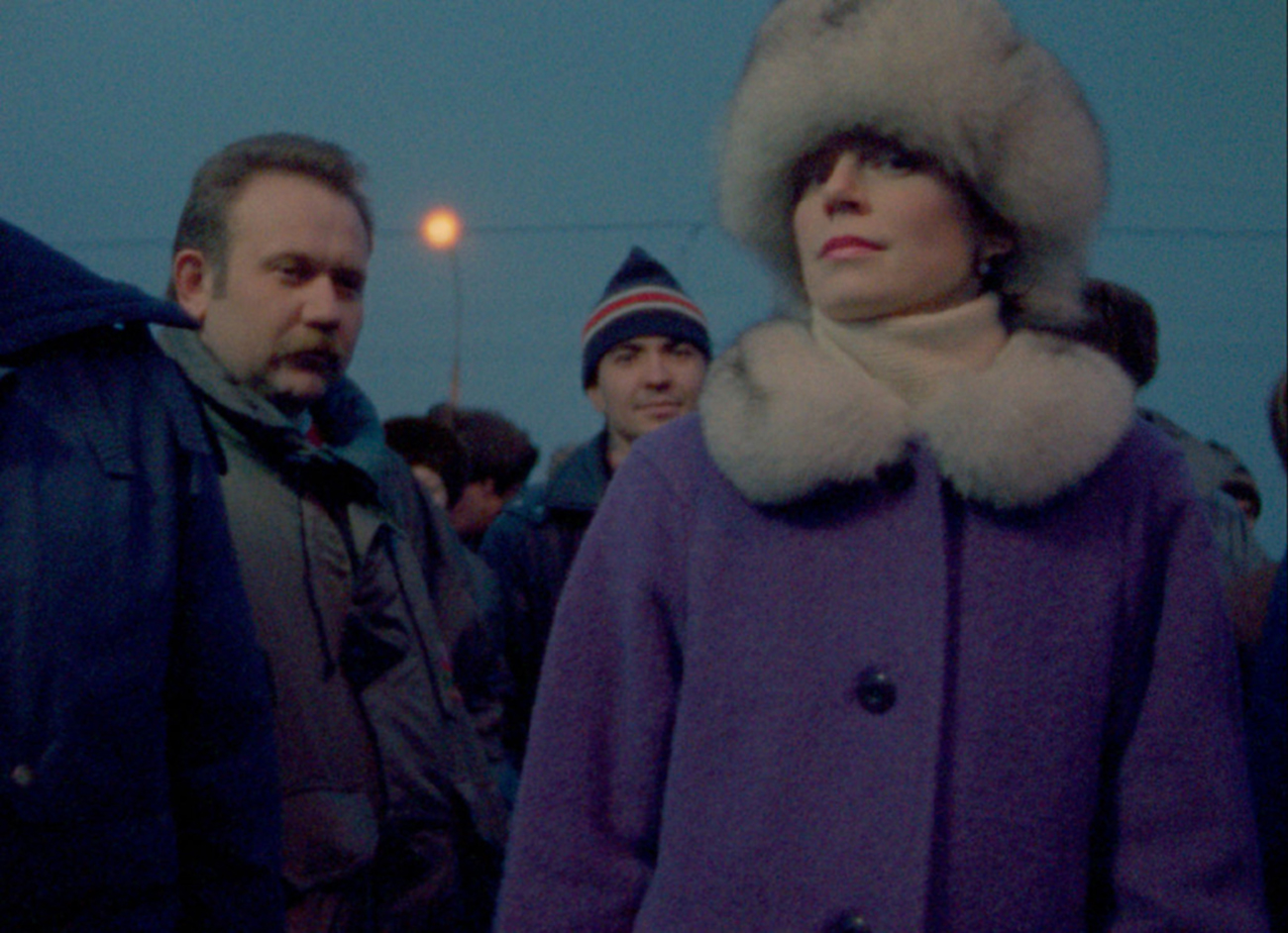Between 1991 and 1993, just after the fall of the Berlin Wall, Chantal Akerman travelled through Central and Eastern Europe – to East Germany in the spring, to Poland and Ukraine in the summer, and on to Moscow in the winter. “For already 20 years, I wanted to go to Eastern Europe,” said Akerman, “to work with Slavic languages, which are different but sound quite similar. I wanted to make a work about the changes in voices and languages.” However, the film developed, intuitively, into a completely different form: while the texture of the soundtrack is very important in D’Est, not a single word features in the film. Instead, an audiovisual composition of haunting impressions unfolds, without commentary, dialogue or subtitles. In a succession of long takes, a world in suspension, on the verge of an indefinite future, is revealed. “Without getting too sentimental,” she says, “I would say that there are still faces that offer themselves, occasionally effacing a feeling of loss, of a world poised on the edge of an abyss, which sometimes take hold of you, as you cross “the East” as I have just done.”
“I originally wanted to work with a lot of languages. I had a lot of preconceived ideas, but it was through traveling a lot in those countries and finding things that interested me both in an emotional way and in a cinematic way that the film took shape. We made four trips. We were shooting a bit, but I knew the film was not there yet. So through the traveling I saw these people waiting and waiting and I thought that I should install myself next to them and that would be the film. So the shape was in my mind, but it was still very loose. And then I shot the material and through the editing I started to find the shape. I started to swim. And, in a way, that’s much more interesting than to just follow a story. It’s through cinema that you find the cinema.”
Newly digitized and restored by CINEMATEK
